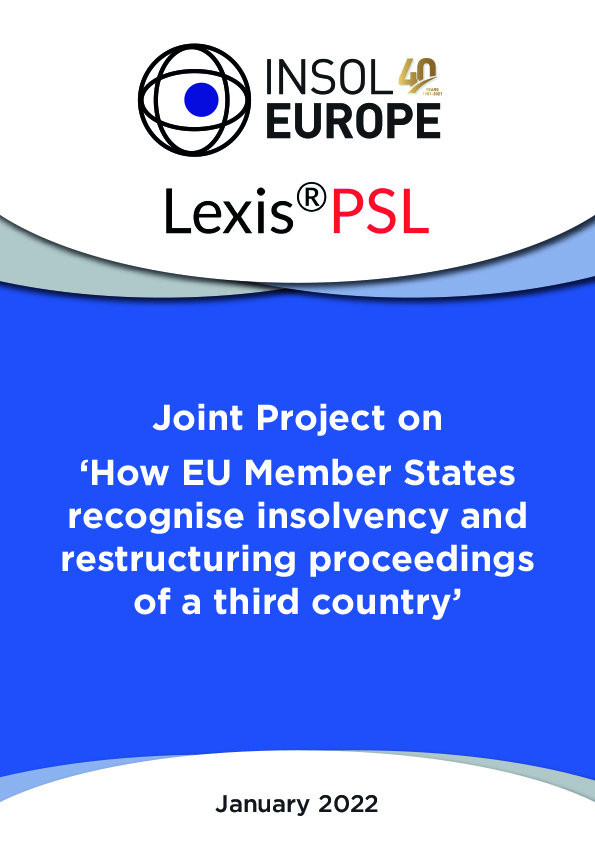 INSOL Europe/Lexis®PSL Joint Project on ‘How EU Member States recognise insolvency and restructuring proceedings of a third country’
INSOL Europe/Lexis®PSL Joint Project on ‘How EU Member States recognise insolvency and restructuring proceedings of a third country’> Download the final publication here
Apart from the European Insolvency Regulations applicable only between EU Member States, a few international instruments deal with the recognition issue relating to insolvency (and insolvency-related) judgments. Those international instruments, namely the UNCITRAL Model law (for those Member States which have enacted it), the Hague Convention or EU Rome I Regulation, may also be complemented by other specific private international rules. For third countries and the UK (as a consequence of Brexit), a great uncertainty remains therefore in terms of providing the necessary authority for the recognition of such judgments. The Joint project between LexisPSL and INSOL Europe on the recognition of foreign decisions in the 27 EU countries has been designed to address those situations and provide the readers with a description of each national recognition process applicable to those judgments.
As an added value, the proposal had been made by LexisPSL (UK) to make the exercise more concrete than a mere description of national provisions within the scope of this project. That is why the project contains the national provisions which would apply with regard to the recognition of proceedings commenced in the UK in respect of an English Part 26 scheme of arrangement or Part 26A restructuring plan (or the reasons why such recognition would be excluded). Indeed, this project includes restructuring proceedings and/or judgments commencing insolvency proceedings while international texts may exclude them from their scope of application.
This document was prepared by a team drawn from the INSOL Europe Country coordinators with the assistance of INSOL Europe members or other local experts where necessary to complete this valuable research project. Readers will find individuals answers of the contributors from the 27 EU countries but also a table summarising their findings which is reproduced in Appendix I of the publication. We hope that this publication will achieve its aim, namely to ensure that a proper consideration should be given to providing information for all professionals interested in questions arising under the International Private Law of Insolvency. We wish you an insightful reading!
